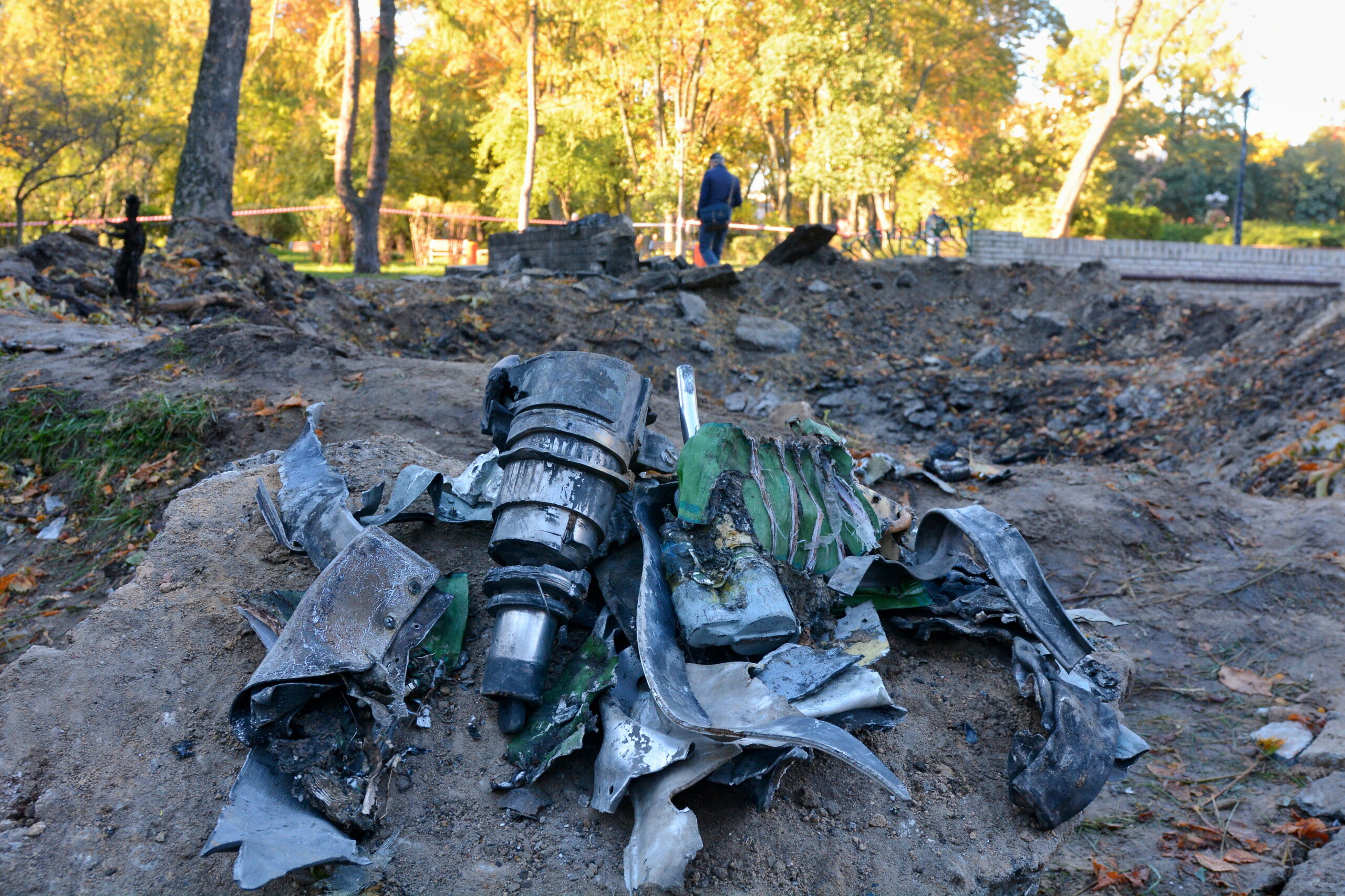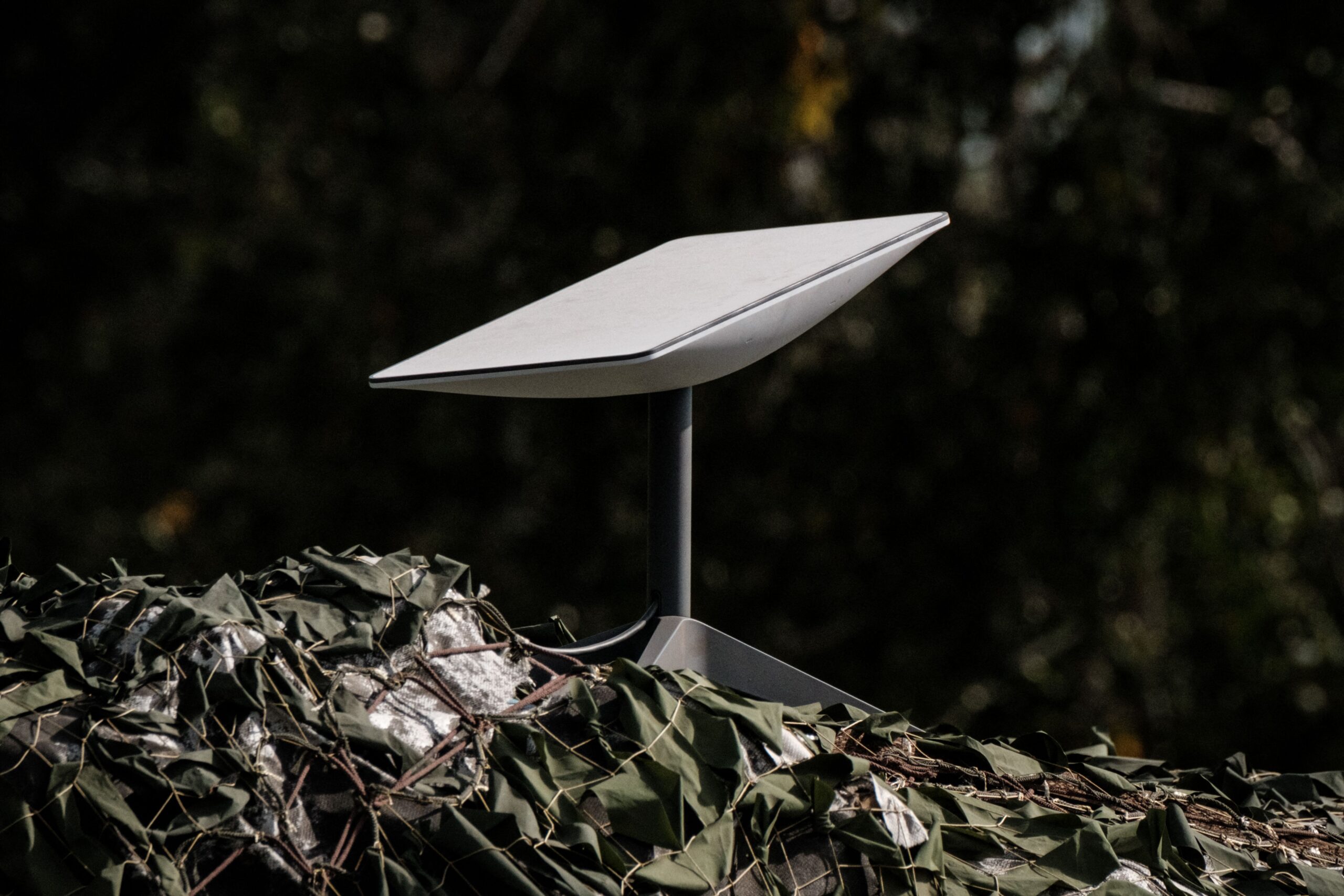Ukraine is continuing to make “small gains” in its counteroffensives in both the east and the south, with the biggest advances in the Kherson Oblast, a senior U.S. military official told reporters Friday. The advances are allowing Ukrainian forces to spare their expenditures of Guided Multiple Launch Rocket System, or GMLRS rounds fired by High Mobility Artillery Rocket System (HIMARS) and M270 launchers. But there’s been a “pretty high impact” in terms of troop losses for both sides.
The Russians, meanwhile, have fired “hundreds” of missiles at Ukraine in retaliation for the Kerch Bridge attack last week, said the official, speaking to reporters, including from The War Zone, on condition of anonymity.

“The use of precision-guided munitions in a very imprecise way, has continued over the course of the week,” the official said. “In most cases, they have been used at civilian targets either indiscriminately or in a deliberate way as it relates to infrastructure targets like electricity or bridges or otherwise.”
On the battlefield, “there is probably more movement in Kherson than anywhere else on the battlespace,” said the official.
Ukrainian forces “continue to advance…just north of the city of Mylove and then extending essentially to the north and west, with a number of small towns and villages that the Ukrainians have been able to clear of the Russians.”
The Russians “have moved back from their reestablished frontlines after the beginning of this [Ukrainian counteroffensive] six weeks ago, and are establishing defenses further south.”
The Ukrainians are also making “incremental gains in that central access,” the official said. “Not a lot of advancement – we’re talking kilometers as they move.”
That’s resulted in “two coinciding axis that are starting to force the Russians to make some decisions in terms of how they want to choose to defend.”
There has not been “a huge number of movements outside of Kherson City in terms of the Ukrainians, but certainly not any Russian gains in that portion of the battlespace,” the official said.
Ukraine had been making tremendous gains since launching its Kharkiv counteroffensive in the east.
But things have slowed down for Ukraine, which has made “limited” gains there over the last week, the official said. The Russians, however, “continue to strengthen their defenses” there. There are some “very minor incremental gains, really all the way from the northern portion of the Kharkiv area of operations down towards Lyman,” the official said. “But really limited in terms of movement this week.”
In Donetsk, “it is similar but the other way. We’ve seen the Russians continue to work to attack the Ukrainians around Bakhmut. Those gains have also been very small for the Russians. And at times, we’ve seen the Ukrainians counterattack with effectiveness to retake land that the Russians had previously taken.”
“All of those attacks on both sides are coming with pretty high impact in terms of the employment of artillery and the losses to the sides who are making those advances.”
There were no real changes to the Russian advances in the Zaporizhzhia region, the official said.
“Like you all, we continue to watch this operation with added care, just given the nuclear power plant. We have seen artillery that’s landed in and around the Zaporizhzhia area, but nothing that’s caused us a great concern this week” with regards to the Zaporizhzhia Nuclear Power Plant, Europe’s largest.
Though Ukraine has only made incremental advances this week, their counteroffensives have gained enough ground that they don’t have to use GMLRS, which has a greater range and is far more accurate than standard howitzer rounds.
While the Pentagon has closely guarded the number of GMLRS it has provided Ukraine, they have received orders of magnitude more howitzer rounds, according to Pentagon records. You can read our previous report on concerns over the supply of GMLRS rockets here.
Ukraine’s counteroffensives “have placed a good portion of that battle space under artillery range of standard artillery, not GMLRS, and so you’ve seen them employ fewer GMLRS recently because they just don’t need to,” the official said. “They can range the Russian targets they want to hit with standard artillery.”
In the maritime area of operations, the Russians have about a half dozen ships in the Black Sea, including about three that are capable of firing Kalibr cruise missiles, the official said.
Those ships fired four Kalibrs on Thursday, all of which the Pentagon believes were intercepted by Ukrainian air defense systems, according to the official.
Since Russia began its missile and drone barrage on Ukraine in the wake of last week’s attack on the Kerch Bridge, Ukraine’s air defenses were able to shoot down about half of the 80 incoming missiles in the first 24 hours the senior Pentagon official said.
What’s unknown, the official said, is how many air defense missiles Ukraine had to expend to do that.
Pentagon leaders spent a good part of this week in Brussels with NATO allies working on plans to improve Ukraine’s air defenses, which you can read more about here.
Given how many high-precision missiles Russia has fired this week alone, questions have arisen about how many they have left.
Oleksiy Danilov, Secretary of the National Security and Defense Council, told Ukrainian media that Russia has less than 30% of its stock of high-precision missiles left since launching its full-on invasion Feb. 24.
Ukrainian Defense Minister Oleksii Reznikov said Russia has a little more than 600 high-precision munitions left in its arsenal.
The U.S. official could not confirm those figures but said “the numbers of precision missiles that the Russians have fired since the beginning of the fight are pretty extensive.”
The fact that Russia has turned to Iran for drones “speaks to their concerns associated with precision munitions. So every one of them fired is probably a very careful consideration for the Russians.”
Economic sanctions placed on Russia since its all-out invasion have likely reduced its ability to regenerate its precision-guided missile stocks, the official added.
“We have to believe that the sanctions are having an impact on their defense industrial base and the ability to regenerate in particular those precision munitions.”
As for the precision of Russia’s missile strikes, “I would love to think that missiles that are going into the side of apartment buildings are not meant to hit apartment buildings,” the official said. “I don’t know that you can make that assertion because we’ve seen pretty indiscriminate attacks [by] the Russians.”

Before we head into more of the latest news from Ukraine, The War Zone readers can catch up on our previous rolling coverage here.
The Latest
The Pentagon offered few details Friday in the wake of a huge CNN scoop the night before about how Elon Musk’s SpaceX company might stop paying for Ukraine to use its Starlink satellite internet constellation for communications.
Starlink provides relatively secure, reliable, remote satellite communications that have been critical to Ukraine’s fight against Russia and now the Pentagon and Ukrainian officials are scrambling to find potential alternatives if needed.
SpaceX sent a letter to the Pentagon last month saying it can no longer continue to fund the Starlink service as it has, CNN reported. The letter also requested that the Pentagon take over funding for Ukraine’s government and military use of Starlink, which SpaceX claims would cost more than $120 million for the rest of the year and could cost close to $400 million for the next 12 months.
“We are not in a position to further donate terminals to Ukraine, or fund the existing terminals for an indefinite period of time,” SpaceX’s director of government sales wrote to the Pentagon in the September letter, according to CNN.
The flap began when Musk took to social media earlier this month with a “peace plan” for Ukraine, which greatly angered officials in Kyiv and people around that nation.
On Friday, Musk tweeted that in asking the Pentagon to pay for Starlink in Ukraine, he was following the advice of a Ukrainian diplomat who told him to “fuck off” in response to that peace plan. That was before CNN said the letter was sent to the Pentagon.
On Friday, deputy Pentagon press secretary Sabrina Singh acknowledged that the Pentagon has communicated with SpaceX about Starlink, but offered few other details. She declined to reveal the exact nature of communications the Pentagon had with SpaceX regarding Starlink, what internal discussions the Pentagon has had about it, how much, if anything, it has paid the company to provide Ukraine with its Starlink services, or when plans for an alternative system were first drawn up.
The Pentagon has had a relationship with SpaceX since before the all-out war, said Singh.
“We’re continuing to talk to SpaceX and other companies about [satellite communications] capabilities, but I don’t want to go into further details of those,” she said. “Those conversations are happening and it’s ongoing. And as a result, I want to be able to preserve the privacy happening behind those closed doors, and when I have more to share, I’d be happy to share.”
The Pentagon, she added, understands “the fragility” of the satellite communications “and it’s important that not just command and control remain intact on the battlefield but throughout [the country],” she said. “We’re assessing our options and trying to do what we can to help keep these [satellite] communications capabilities to ensure that these communications remain for the Ukrainian forces.”
The Pentagon, she added, is “working with the Ukrainian Ministry of Defense” to “ensure that there’s stable communication for the Ukrainian forces and for Ukraine. And so that’s why we’re working with our partners and allies. To look at all options on how best we can support those identified by Ukraine.”
Before Singh addressed reporters, including from The War Zone, a senior military official said that while recent Ukrainian advances have not been affected by any loss of Starlink, such systems are an important battlefield asset.
“They have not indicated any concern – in terms of the ability to prosecute the fights they’ve got right now in Kharkiv, Kherson or the central portion in the Donetsk – with us relative to Starlink,” said the official. “But I know it’s been huge in terms of their ability to communicate and then to coordinate planning and operations over the course of the last seven, eight months.”

“I don’t think you can overestimate or overemphasize the impact of being able to communicate,” the official said. “As you know, one of the first things you try to do in a fight is to reduce your opponent’s ability to communicate. And in this case, Starlink has proven exceptionally effective on the battlefield because it’s allowed Ukrainians multiple, multiple connections, and in that regard, has been very, very helpful in their efforts at the tactical and strategic level.”
One of Ukrainian President Volodymyr Zelensky’s top advisors said he expects SpaceX will continue to provide services after negotiations. “Like it or not, Elon Musk helped us survive the most critical moments of the war,” Mikhail Podolyak tweeted Friday.
Friday evening, the Defense Department announced the authorization of another Presidential Drawdown of security assistance, this one valued at up to $725 million to meet Ukraine’s critical security and defense needs. It’s the Biden Administration’s 23rd drawdown of equipment from DoD inventories for Ukraine since August 2021.
This new security assistance package includes:
- Additional HIMARS ammunition;
- 23,000 155 mm artillery rounds;
- 500 precision-guided 155 mm artillery rounds;
- 5,000 155 mm rounds of Remote Anti-Armor Mine (RAAM) Systems;
- 5,000 anti-tank weapons;
- High-speed Anti-radiation missiles (HARMs);
- More than 200 High Mobility Multipurpose Wheeled Vehicles (HMMWVs);
- Small arms and more than 2 million rounds of small arms ammunition;
- Medical supplies.
In total, the United States has committed more than $18.2 billion in security assistance to Ukraine since January 2021, according to the Pentagon. Since 2014, the United States has committed more than $20.3 billion in security assistance to Ukraine and approximately $17.6 billion since the beginning of Russia’s full-on invasion on February 24.

With much attention focused on new air defense systems to strengthen Ukraine’s ability to defeat Russian missile and drone attacks, the Ukrainian military appears to have launched a missile barrage of its own targeting Belgorod in western Russia. According to claims by Russian state news agencies, the attacks left an undisclosed number of people in the region, which borders Ukraine, killed or injured, with a rail line and an ammunition dump being among the apparent targets. You can read much more about that in our coverage here.
Ukraine also apparently hit a Russian ammo dump close to the Russian border, near the captured port city of Mariupol.
The situation in Belarus, Russia’s client state on the northern border of Ukraine, remains tense.
The country announced the beginning of a counterterrorism operation due to the “threat from neighboring countries,” and has begun a “hidden mobilization” of troops, Ukraine Pravda reported.
And Russian troops will arrive there soon, a top Belarus military official said, according to the Kyiv Independent, citing state-controlled media in Belarus.
Ukrainian troops have liberated more than 1,600 settlements as they claw back from Russia’s February all-out invasion, the Armed Forces of Ukraine claims.
But the fighting remains ferocious as you can see from videos that have emerged from the battlefields over the past 24 hours.
Ukraine’s increasingly successful Kherson counteroffensive has come with a heavy cost.
Ukrainian snipers continue to have a devastating effect on Russian forces.
Russian forces attempted an attack on a Ukrainian position in Kherson, but after emerging from cover, they were forced to retreat by a Ukrainian artillery barrage.
But the Russians had some successes too, claiming to have shot down a Ukrainian Air Force Su-25 Frogfoot ground-attack aircraft.
And Russia’s terrifying TOS-1 multiple-launch rocket system continues to wreak havoc by firing thermobaric rockets at Ukrainian forces.
Essentially, this type of weapon uses oxygen from the surrounding air to generate a high-temperature explosion and a much more powerful blast wave over a longer duration than a conventional explosive. This creates extreme heat and a vacuum that can cause horrible damage to human tissue and orangs. It is especially effective for clear trenches, tunnels, and other enclosed spaces.
And Russia’s Iranian-supplied loitering munition drones continue to present a problem for Ukrainian forces. Video of what may be the first anti-radar iteration of the Shahed-136 striking a Ukrainian position has emerged on social media.
But sometimes, those drones don’t have an impact. The Ukraine Weapons Tracker OSINT group is displaying what it says is the best close-up look at one of them, which crashed, but did not detonate.
The Ukrainian government says Russia is running short on these Iranian drones, with only about 300 left, according to Reznikov, but Zelensky says Moscow has ordered thousands more from Tehran.
Meanwhile, Russia still has its own domestic drone production capabilities, albeit they are limited. Recently, Dmitry Medvedev, Deputy Chairman of the Security Council of the Russian Federation, paid a visit to the Special Technology Center in St. Petersburg, which makes the Orlan-10 drone. It has been used extensively in Ukraine, particularly in a fire-direction role for artillery, and it has become a favored target of Ukrainian soldiers sporting both man-portable air defense systems (MANPADS) and specialized counter-UAS guns.
Nearly a week after the Kerch Bridge was severely damaged in an attack, ongoing problems there continue to plague Russian logistics. Traffic is apparently backed up for nearly 100 miles as a result.
And while Russia has promised a quick fix to Vladimir Putin’s prized span linking Russia with the Crimean peninsula it has occupied since 2014, it is unclear exactly when the roadway and rail lines will be fully repaired. The deadline has been pushed back to next year, but whether that will happen remains to be seen.
After Biden said he didn’t need to meet Putin at the upcoming G-20 summit, the Russian leader returned the favor. Putin said he didn’t see the need for talks with Biden.
And speaking of Putin, he is complaining that with a nearly 700-mile-long Ukrainian front, he had to mobilize citizens to fill in the gaps.
That mobilization effort, meanwhile, continues to go not so well. Moscow police are apparently out in force at places of high foot traffic, looking for future troops.
And the unintended consequences continue to manifest themselves across Russia, in one case delaying a flight because the co-pilot was mobilized and the pilot didn’t show up to a mobilization office and was banned from leaving the country.
Things are even worse for those who do get mobilized. Some of them face life in barracks with no heat, no food, no sleeping bags, no toilets, freezing tents, and bedbug-infested mattresses, according to author and historian Chris Owen. Oh, and no training either.
Ukraine, on the other hand, continues to be the recipient of help from allies.
The first of four promised German IRIS-T SLM air defense systems is already operable and protecting the skies over the south, the Ukrainian Defense Ministry announced Friday.
Ukrainian troops are also already training on the National Advanced Surface-to-Air Missile System (NASAMS), of which the U.S. is expediting the delivery of two of the promised eight such systems. You can read why it will make a huge difference for Ukraine here.
And Lithuania has repaired German-provided Panzerhaubitze self-propelled 155 mm howitzers that had been used by Ukraine.
We will continue to update this story until we state otherwise.
Contact the author: howard@thewarzone.com
